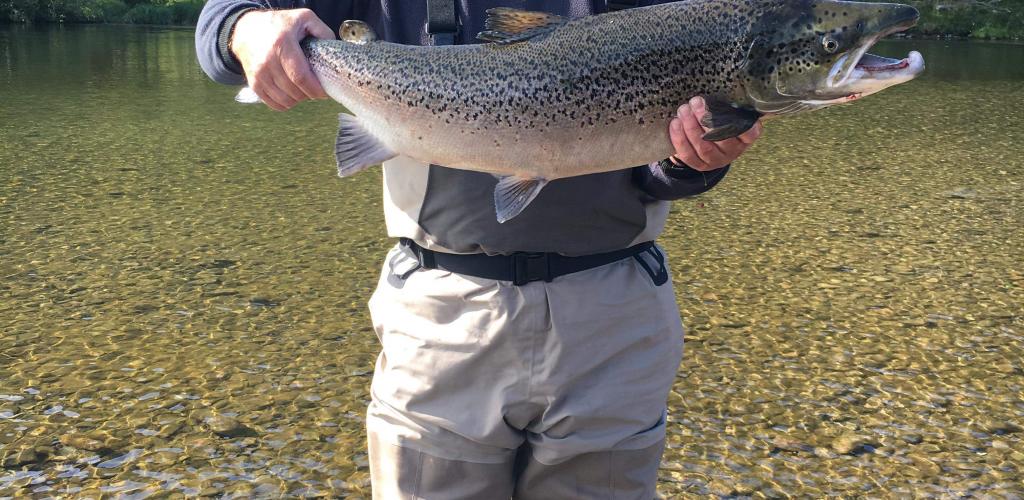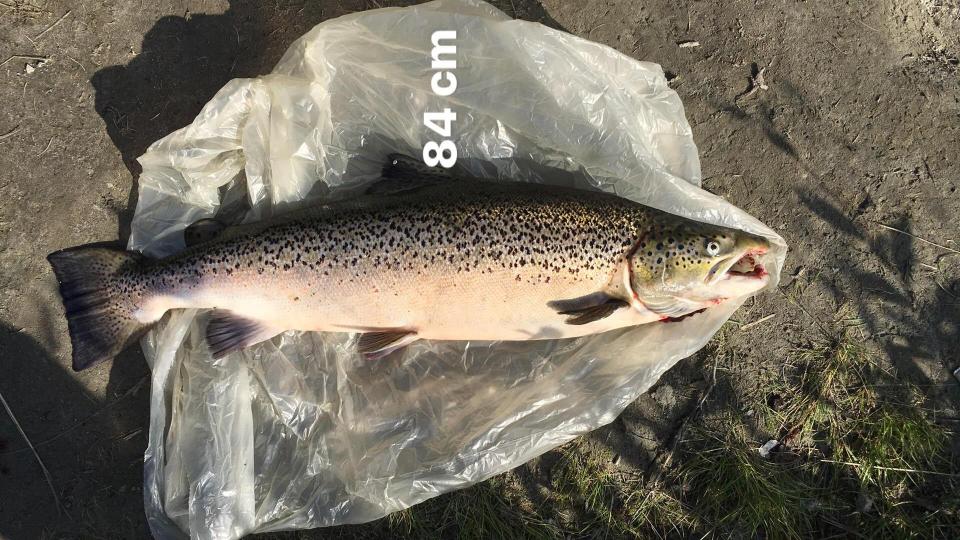
Reports on escaped farmed salmon in Lakselva
Anonymous
Monday 03.September 2018 / 15:40
On the 24th of August, I was sent a picture of a salmon caught in Karhukostet. My immideate impression was that this was a sarmed salmon. We sent scale samples to the Norwegian Institute of Nature Research, and got an answer from them today where it said that from their analysis this was an escaped farmed salmon.
As most of you know, the 24th was also the date where we sent live that a big salmon was hooked down in zone 1, and it was the message about this farmed salmon that brought me down here in the first place. I never got as far as to have a look at this farmed fish in person, and with all the attention being on the live-feed, it was forgotten afterwards. I've borrowed some pictures, however, so that you may see for yourselves.
A lack in political will
We will never know where this salmon escaped from, due to the fact that our politicians do not set any demands to tag or to seperate farmed salmon from the surrounding environment in closed and secure pens. We find it amazing that an industry is allowed to play Russian roulette with such a valuable resources as our wild salmon, without a political will to solve the obvious problems the salmon farming industry is struggling with - knowing that there are solutions to it.
Escaped farmed salmon is not a big problem in Lakselva, but one fish, is one to many, and it will possibly lead to a lot of damage. There has also been proven a genetical mix in Lakselva. Despite a massive local opposition in the county of Porsanger, a new salmon farm was established in our fjord in 2017, and a new location has been applied for. With frequent reports of escapes from the salmon farming industry, we fear that this problem will get bigger.
Historical adaptation
The wild salmon has through generations adapted to it's home river, which is clear by looking at the different characteristics from a salmon from Lakselva opposed to a salmon from Børselva - even though they run into the same fjord, with only 30 kilometres apart. The farmed salmon is bred with certain attributes making it prone to grow fast and give a better return to the salmon farming companies. Mixing these attributes with wild salmon leads to very unfortunate and irrepairable damage to the gene-pool which has developed through generations.
One of the best means to avoid genetical mix, is to have a healthy and sustainable stock of wild salmon in the river. This is one of the major arguments to protect the big salmon, and also one of the main reasons we we encourage the release of our big fish.
When the sea-trout season is over, we'll start with the test fishing. Escaped, farmed salmon have a tendency to enter the river late in the season, and often after the fishing season has ended, which is why this test fishing is done in the fall. We are of course hoping that we won't catch any escaped fish, but time will show. In other words, it's the local river managers that have to pay the cost and carry the burden of this, when it in reality shouldn't have been a problem all together, had the politicians "done their job".


